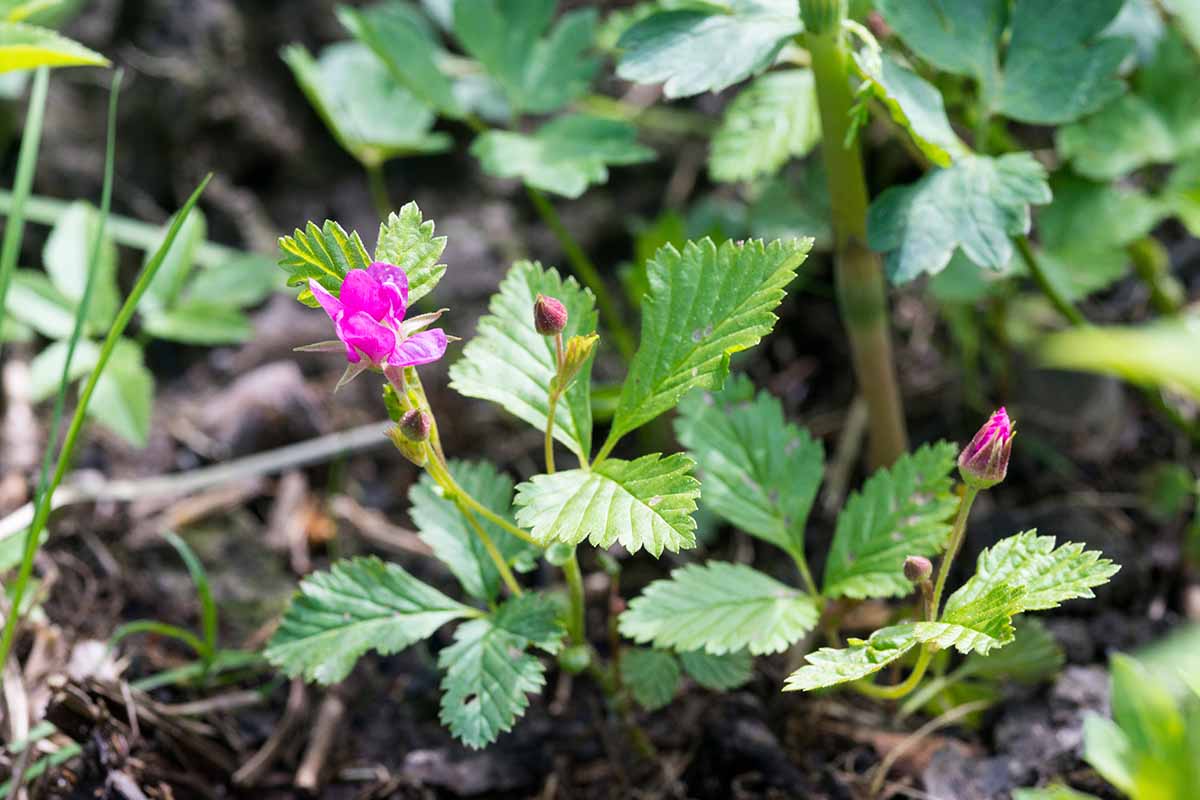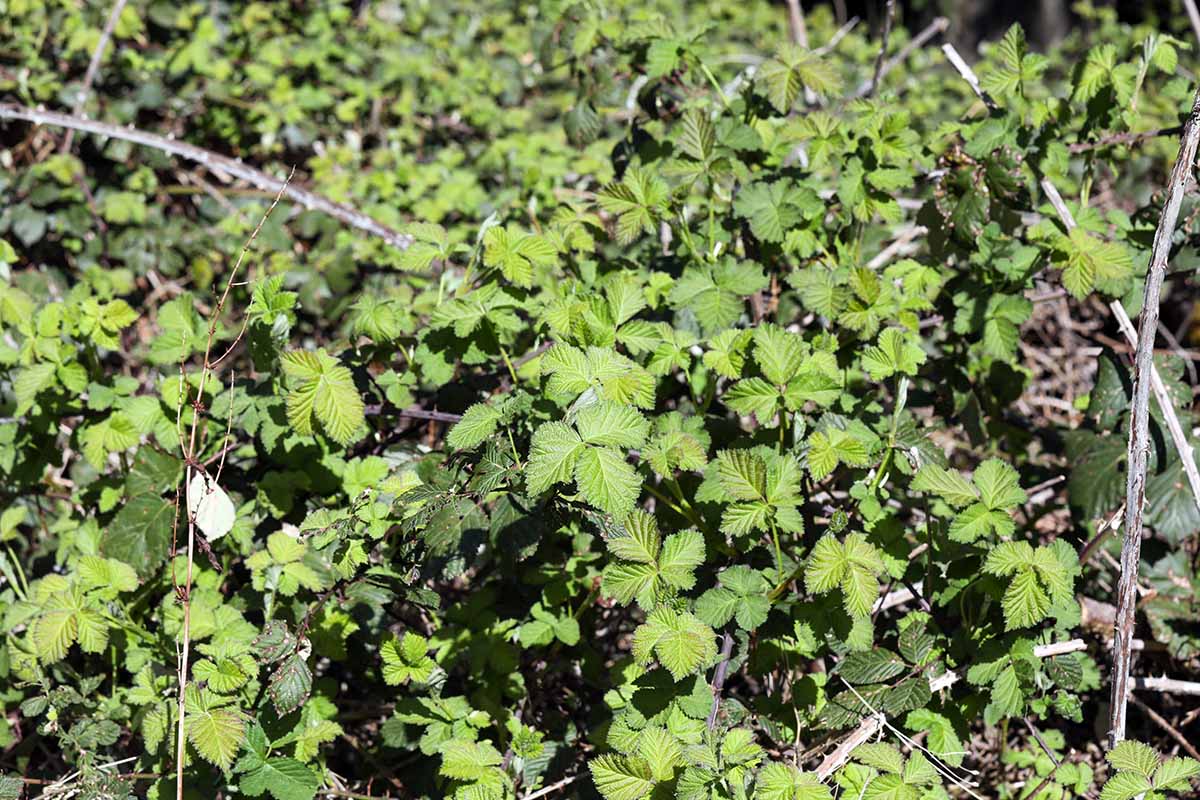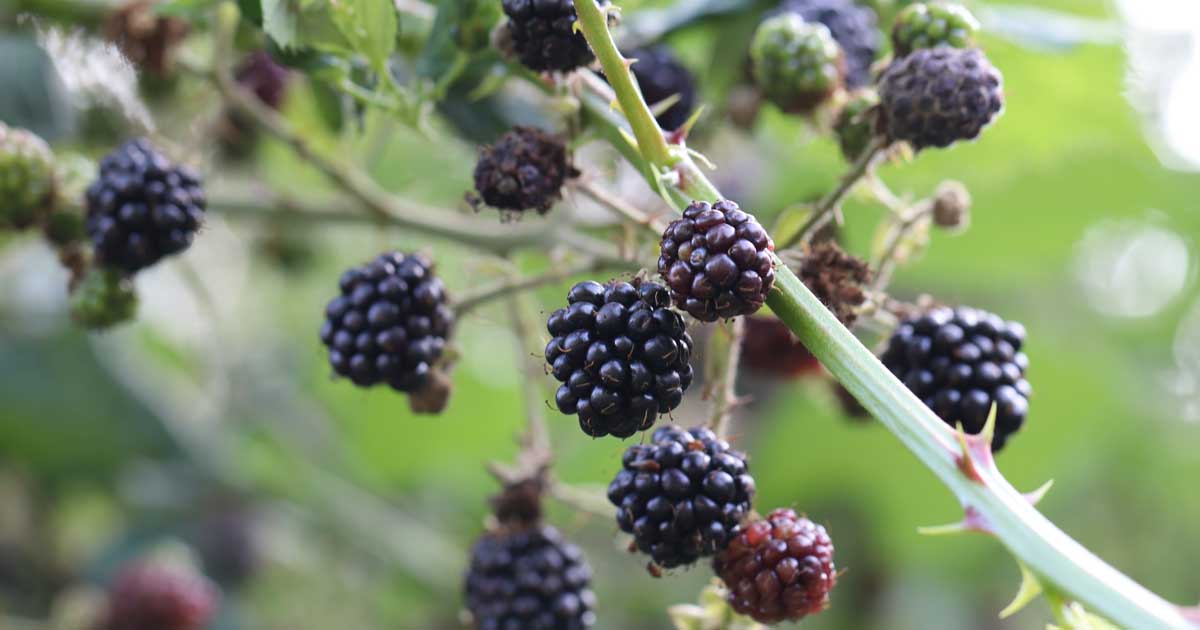Rubus spp.
I was on a nature walk near my home and my pant leg was grabbed by a tenacious Himalayan blackberry. I cursed the evil cane as I unhooked it from my pants and plucked an errant thorn free.
A few minutes later, I found a native blackberry, so I snapped a few pictures to share with friends and recorded the location on my phone.
What made finding one member of the Rubus genus so exciting and finding another such a negative experience? Location, location, location.


We link to vendors to help you find relevant products. If you buy from one of our links, we may earn a commission.
When we use the term “bramble,” it often has a negative connotation. It might refer to a plant in the Rubus genus that is growing in a place where we don’t want it.
But they’re not all bad. If you like raspberries, then you know how fabulous these plants can be.
It’s similar to how we might call something like amaranth a “weed” when it grows in an undesirable spot, but it’s considered a “crop” or “ornamental” when it’s cultivated in a location where we want it to grow.
Coming up, we’re going to dive into the wild world of brambles to really figure out what they are. Here’s what we’ll discuss:
Ready to get your fingers figuratively stained? Let’s go!
What Is a Bramble?
The term bramble basically refers to anything in the Rubus genus. There are over 200 species that fall into this category, including one plant that is actually called a brambleberry (R. arcticus).


According to “A Botanist’s Vocabulary” by Susan K. Pell and Bobbi Angell, a bramble is “a prickly plant, usually specifically applied to raspberries and blackberries (Rubus), less commonly to their other relatives in the rose family (Rosaceae).”
The origin of the word bramble comes from Old English and translates to something like “broom.”
All of these plants are perennials that act as biennials – while the crowns and roots are perennial, the canes are produced on a two-year cycle. The plants produce a primocane in their first year, which develops into a floricane in the second year, and this is where the fruits form.
Humans have cultivated some types of raspberries from a genetic mutation to develop fruits on the first year’s canes, but otherwise, all fruits come from two-year-old canes.


A Botanist’s Vocabulary
By the way, if you’re looking for a comprehensive guide that can explain all those confusing botany terms, Pell and Angell’s book is an excellent resource. You can pick up a copy at Amazon.
All species within the genus can cross-breed or be hybridized, which is how we’re able to enjoy plants like loganberries, boysenberries, tayberries, and marionberries today.


When someone laments the brambles in their yard, they’re usually referring to an invasive species that has large thorns.

